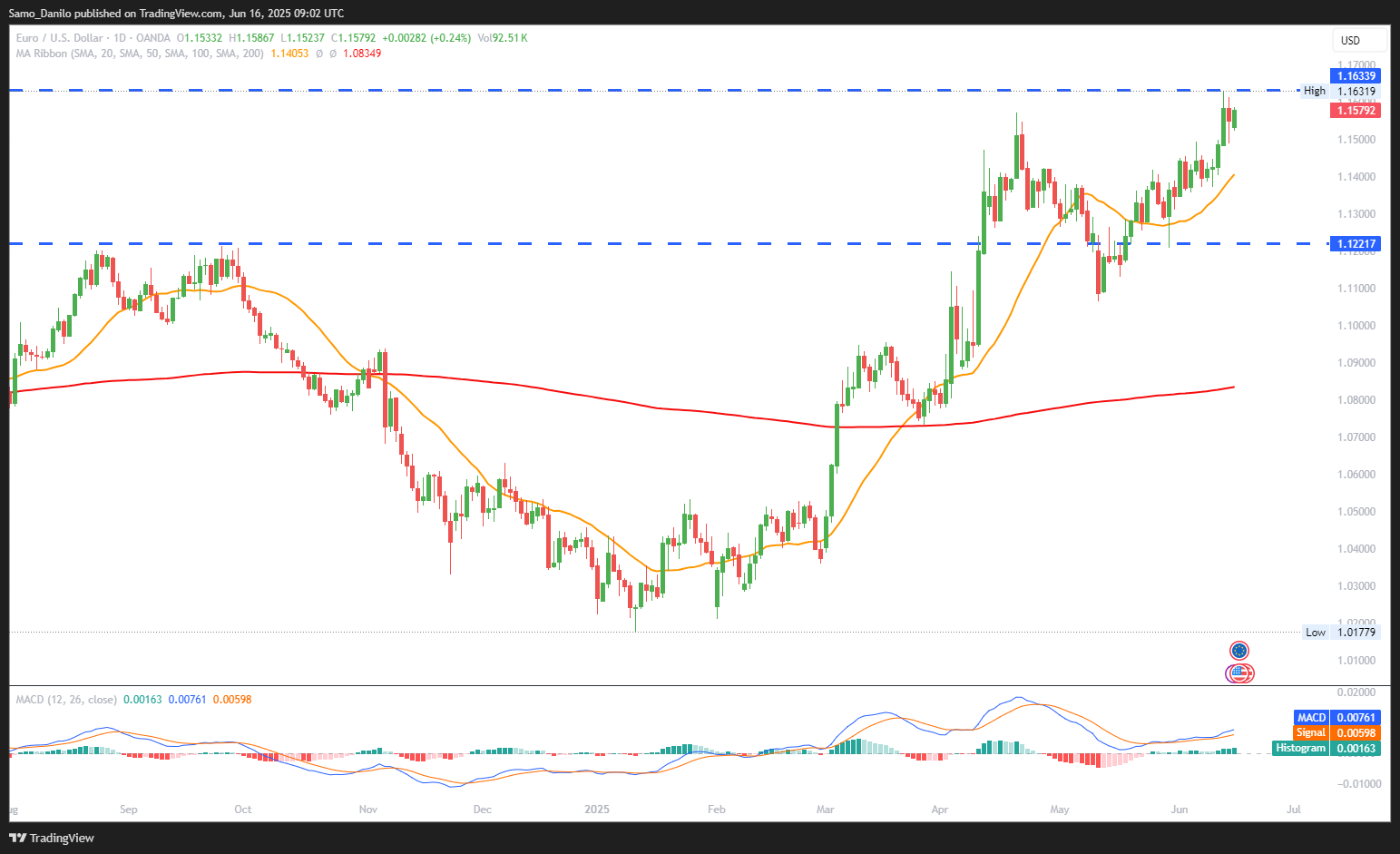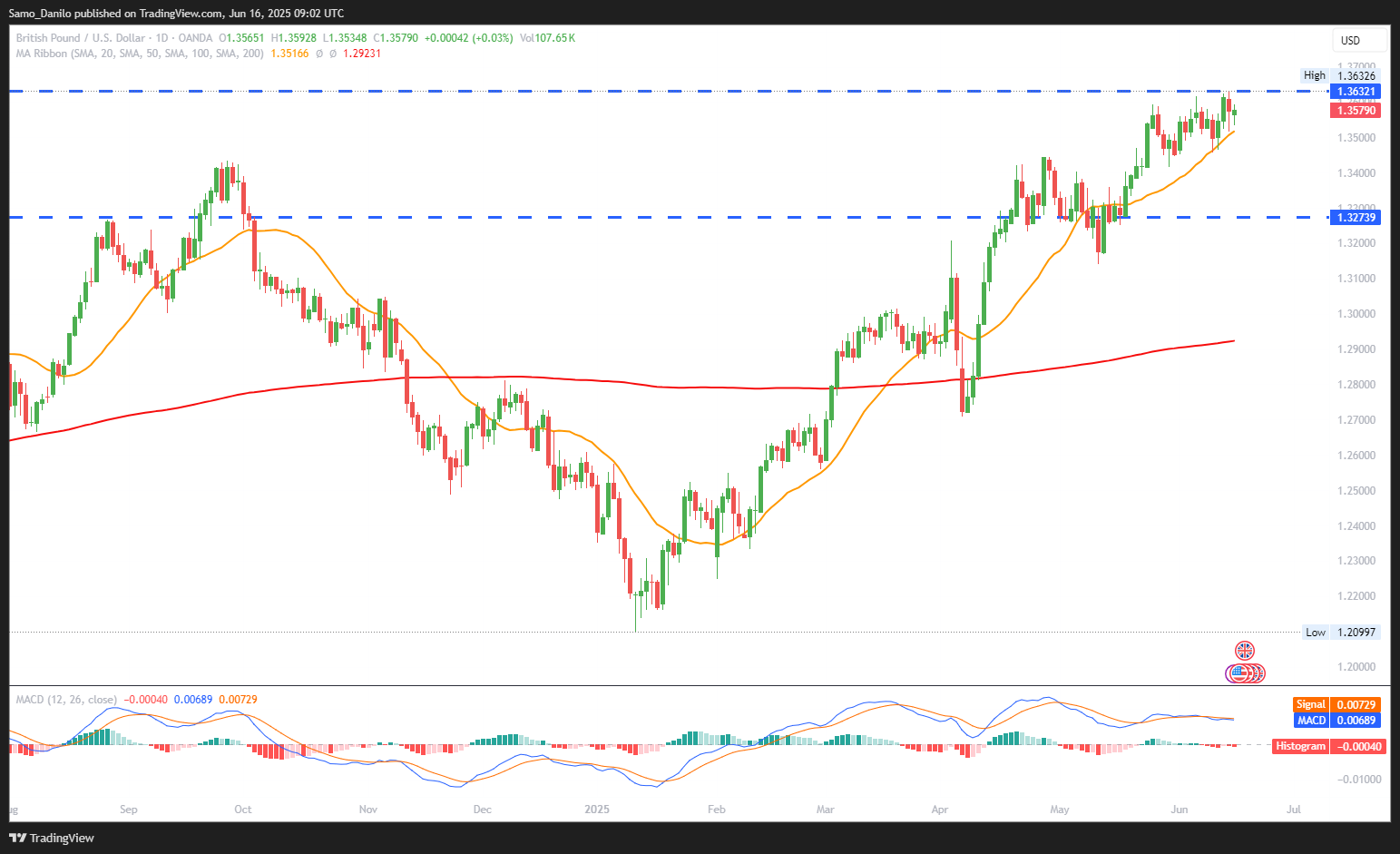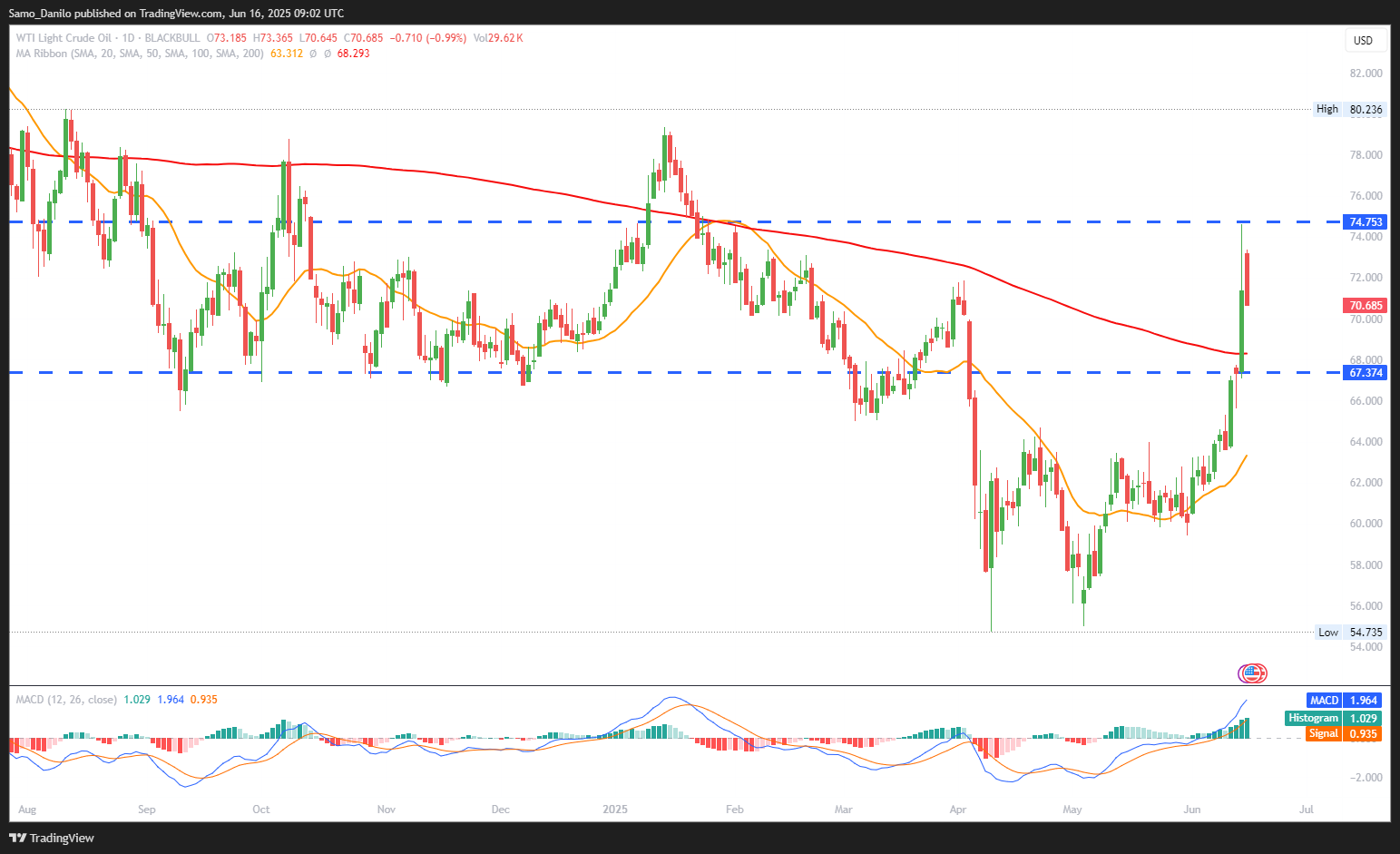EURUSD
- EUR/USD Price: The EUR/USD pair rebounds to 1.1580 in Monday’s European session as the US Dollar weakens, weighed down by resurging trade uncertainty and a broadly risk-on tone in markets. The pair continues its upward correction from last week’s pullback.
- ECB’s Nagel: Bundesbank President Joachim Nagel stated in Frankfurt that the ECB's inflation goal is achieved, hinting there’s “no reason to give up” on progress. The remarks underline the ECB’s current data-dependent, wait-and-see approach.
- Italian CPI: Italy’s final May CPI came in at +1.6% YoY, slightly below the +1.7% preliminary. While not a game-changer, the continued disinflation across the eurozone reinforces the ECB’s dovish bias and suggests no urgency for tightening.
- US Tariffs: The lack of progress in US trade negotiations with multiple partners has revived tariff concerns, putting downward pressure on the US Dollar. Market participants are now factoring in policy stagnation rather than escalation.
- FOMC Expectations: Traders look ahead to the FOMC meeting this week, where the Fed is expected to keep rates unchanged and emphasize a "holding pattern" stance. This aligns with growing expectations for a potential rate cut in September.
Closing statement: EUR/USD has rebounded as dovish ECB commentary and falling eurozone inflation pair with renewed US trade friction and Fed caution, pushing the Dollar lower. Near-term direction will hinge on FOMC guidance and macroeconomic updates later this week.
GBPUSD
- GBP/USD Price: The GBP/USD pair extends its rebound, climbing toward the 1.3600 level in Monday’s European session. The upside is fueled by renewed weakness in the US Dollar, driven by trade uncertainty and cautious Fed expectations.
- Technical Outlook: The 14-day Relative Strength Index (RSI) remains above the neutral 50 level, indicating sustained bullish momentum. The technical setup supports a continuation of gains, provided fundamental conditions remain favorable.
- UK Autumn Statement: Chancellor Rachel Reeves announced a rise in employers' National Insurance contributions from 13.8% to 15%, aiming to boost fiscal revenue. While not immediately market-moving, the fiscal tightening may affect business sentiment longer term.
- BoE Expectations: Markets anticipate the Bank of England to keep rates steady at 4.25%, as it grapples with stubborn inflation and weakening labor market indicators. This cautious stance limits major upside surprises in Sterling.
- UK CPI Data: The upcoming UK CPI release for May will be closely monitored. Expectations point to a moderate pace of inflation, which, if confirmed, may reinforce a steady BoE policy path and cap GBP/USD gains in the short term.
Closing statement: GBP/USD is benefiting from a weaker USD and maintains a bullish technical tone, but upcoming UK CPI data and the BoE policy decision could prove pivotal. Traders should remain alert to shifts in inflation and rate expectations later this week.
XAUUSD
- XAU/USD Price: XAU/USD is trading around the $3,400 mark in early Monday trading, pulling back from a two-month peak. The move represents a technical retracement, though the broader bullish trend remains intact.
- Technical Outlook: Despite the intraday drop, the formation of an ascending trend channel, combined with Friday’s breakout above $3,400 and positive daily oscillators, suggests underlying bullish momentum remains strong for gold prices.
- Geopolitical Tensions: While Israel-Iran hostilities continued over the weekend, the conflict has yet to escalate into a broader regional war. Notably, Iran has not threatened to block the Strait of Hormuz, a move that could significantly impact oil markets and risk sentiment.
- US Consumer Sentiment: The University of Michigan’s Consumer Sentiment Index surged to 60.5 in June, far exceeding the expected 53.5. The stronger sentiment data slightly eased immediate pressure on the Fed to pivot dovish, potentially limiting gold’s upside.
- Fed Expectations: Markets continue to price in the possibility of a Fed policy shift, citing softening inflation and broader signs of an economic slowdown. This macro backdrop offers medium-term support to gold as a hedge against rate cut speculation.
Closing statement: Gold is experiencing a short-term pullback from recent highs, but the technical and fundamental picture still supports upside potential amid geopolitical uncertainty and expectations of a Fed policy pivot. Watch for further signals from inflation data and central bank commentary this week.
CRUDE OIL
- Crude Oil Price: West Texas Intermediate (WTI) crude oil is trading around $72.15 in Monday’s European session, maintaining gains from Friday after Israel’s military strike on Iran renewed geopolitical concerns and market risk premiums.
- Strait of Hormuz: A senior Iranian commander’s warning about possibly shutting down the Strait of Hormuz has heightened fears of global supply disruption. Since the strait handles nearly 20% of global oil flows, any closure could significantly tighten supply and push prices higher, per Goldman Sachs.
- Tariff Risk: Despite bullish geopolitical pressure, tariff uncertainty from US President Donald Trump’s pending trade actions tempers WTI’s upside. Trump plans to issue unilateral tariffs on US trading partners within the next two weeks, increasing demand-side risks.
- US–Vietnam Tensions: The US is pressuring Vietnam to reduce reliance on Chinese tech, signaling growing fragmentation in global supply chains. This broader decoupling may indirectly impact oil demand outlook, particularly in Asia.
- US Macro Events: Markets await the US Retail Sales data on Tuesday, followed by Jobless Claims and the FOMC Policy Decision on Wednesday. These events could influence near-term expectations for economic activity and oil demand.
Closing statement: WTI crude is supported by heightened geopolitical risks, especially threats to the Strait of Hormuz, but tariff-related demand concerns and upcoming US macro data could introduce volatility. Traders should remain alert to headline-driven price swings this week.
DAX
- DAX Price: The DAX declined 1.07% on Friday, June 13, adding to Thursday’s 0.74% drop, and extended its losing streak to six consecutive sessions. The index now trades more than 950 points below its record high of 24,479, signaling sustained bearish pressure.
- Index Stocks: German auto and tech sectors led the declines. SAP fell 2.45%, while Infineon dropped 0.41%. Among automakers, Volkswagen slid 2.24%, with BMW, Mercedes-Benz, and Porsche also in the red. This sector-specific weakness reflects renewed concerns over global trade and tech exposure.
- Defense Stocks: In contrast, Rheinmetall gained 2.72%, extending Thursday’s rally. The uptick comes as Middle East tensions escalate, bolstering investor appetite for defense-related equities amid heightened geopolitical risks.
- Iran-Israel Conflict: Markets reacted cautiously to conflicting reports over Iran's position on ceasefire talks. While initial signals pointed to potential de-escalation, Iran's later rejection of negotiations under continued Israeli attacks has maintained market uncertainty, especially around energy and defense themes.
- Upcoming Events: Focus is shifting to China’s NPC Standing Committee meeting (June 24–27), where anti-competition law revisions may be discussed. Meanwhile, US NY Empire State Manufacturing Index (due Monday) could affect sentiment further, especially if it hints at trade-linked industrial weakness.
Closing statement: The DAX remains under pressure, with weakness in autos and tech outweighing gains in defense stocks. Persistent geopolitical tension, trade uncertainty, and upcoming macro events in China and the US could continue to drive volatility in the near term.





